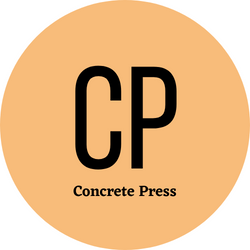How to Repair Retaining Walls
by Emilia Kozey

Retaining walls can be made from concrete, stone, wood (including railroad ties), vinyl, masonry or brick. If your retaining wall is bowing, leaning, or separated, it may require structural repair.
Signs of damage include cracks and efflorescence (white powder). You may also need to add drainage like weep holes or pipes.
Tie-backs
Retaining walls serve a valuable function on your property. However, like other types of foundations they can fail if not properly constructed. When they do, it’s best to find a professional for repairs rather than trying to tackle them yourself.
Often, failing retaining walls are due to expansive soils that expand with moisture. This puts excessive pressure on the wall that can lead to cracking or even collapse. Fortunately, this can be fixed by transferring some of the shear forces to the base where the wall meets the ground. This can be done by extending the base or pouring concrete to thicken it. It can also be done by installing tieback anchors or helical tiebacks.
These are wire or rods that reinforce retaining walls by attaching at one end to the wall and at the other to a stable structure like a buried steel pipe. They can also be a great solution for leaning walls, which are commonly caused by improper construction or frost damage.
Anchors
Many older concrete and wood retaining walls begin to bow, lean or collapse over time. This usually happens because the wall was not properly designed or reinforced during construction and could be caused by soil load, water drainage issues, and even poor foundation footings.
Rather than demolish and rebuild the wall, homeowners can call in a foundation repair specialist to install helical anchors or wall plate anchors. These anchors look like giant screws and are driven into the soil behind a failing retaining wall to stabilize it and pull it back into place.
They work similarly to tiebacks, but can also be used in solid materials such as brick or cinder block walls. These are a great alternative to winged and toggle anchors, which are designed for use in hollow walls and only provide a slight upgrade over screws alone.
Reinforcing
Retaining walls can be constructed of wood, masonry, brick or concrete blocks and are a great way to add visual appeal to your yard. However, these structures are not indestructible and will need to be repaired at some point. Warning signs of when it’s time to have a retaining wall repaired include cracking, crumbling sections and leaning or bowing walls.
Repair costs vary by retaining wall type and material. For example, a brick retaining wall may need to be repaired more frequently than a wood one due to its higher durability and strength.
There are a few ways to stabilize and reinforce retaining walls, including using helical tiebacks or wall anchors. Foundation repair companies that specialize in retaining walls use these methods to repair the structural integrity of the structure and pull the wall back into its original position. They can also install a new footing and backfill to help prevent soil from pushing against the wall.
Drainage
A major cause of retaining wall failure is the amount of water pressure that builds up behind a wall. This pressure can crush a timber, masonry, or concrete block wall that wasn't designed to hold such an enormous amount of weight.
Proper drainage is the best way to avoid such problems. By adding French drains and a footing drainage gravel bed, you can spare your retaining walls from the kind of hydrostatic pressure that causes them to collapse or sink.
Regrading the land so that it slopes away from your retaining walls is another great way to alleviate the stress of moisture. You should also consider installing swales and berms to redirect surface water away from your retaining walls. When these measures are combined with proper drainage, they can help keep your retaining walls looking good and performing well for the long term. This can save you the cost of rebuilding or replacing them in the future.
Retaining walls can be made from concrete, stone, wood (including railroad ties), vinyl, masonry or brick. If your retaining wall is bowing, leaning, or separated, it may require structural repair. Signs of damage include cracks and efflorescence (white powder). You may also need to add drainage like weep holes or pipes. Tie-backs Retaining walls serve…
Recent Posts
- Roofing Company Savannah Sheds Light on the Lifespan of Roofs: How Long Should a Roof Last?
- Cost of Installing a Pool in Cape Coral, Florida: A Rough Guide
- Overland Park KS Painters Provides Insight: Essential Questions to Ask Your House Painter
- Is Stamped Concrete Cheaper than Regular Concrete? Debunking Myths with Columbus Stamp Concrete
- New Orleans Concreters Advocates for Stamped Concrete Driveways as the Ultimate Choice for Durability and Style
